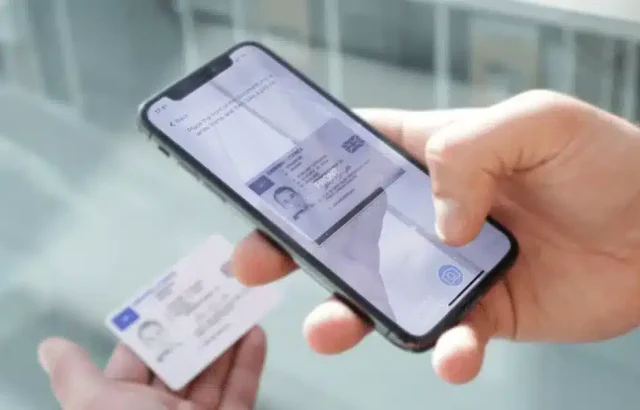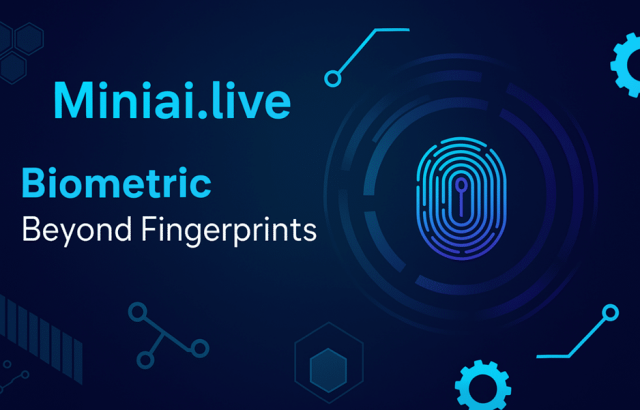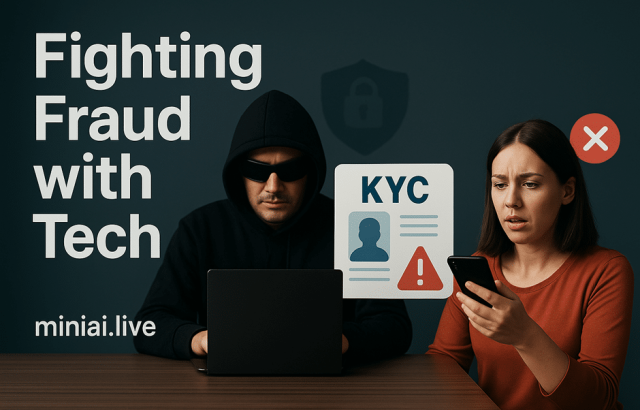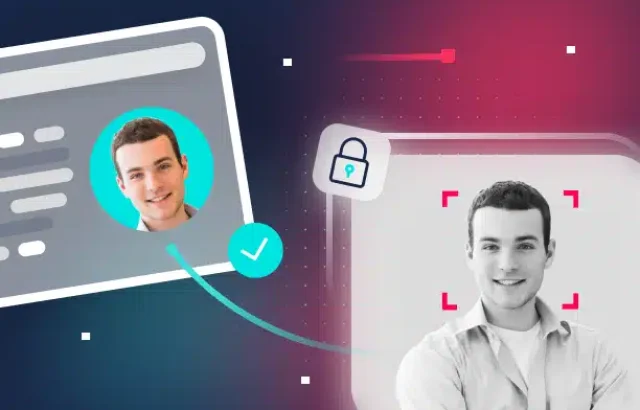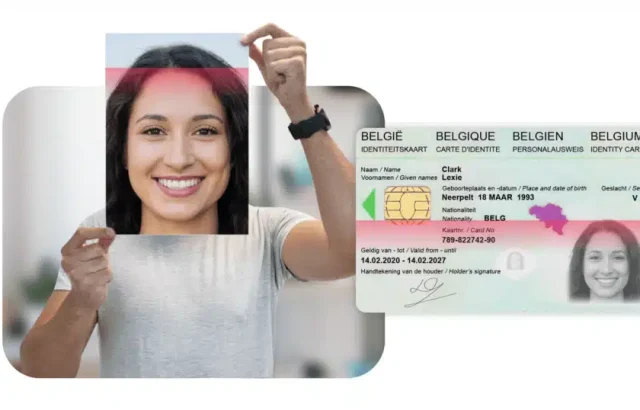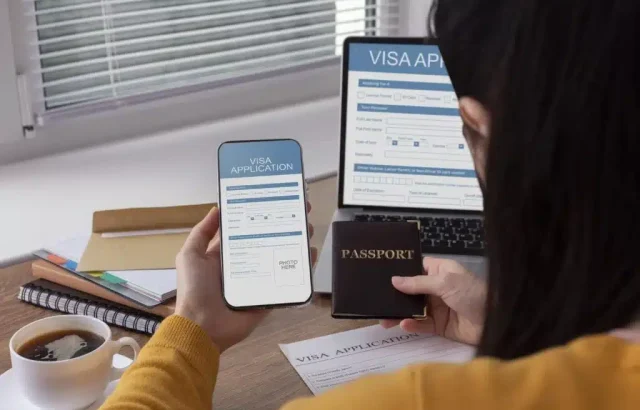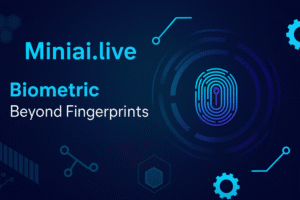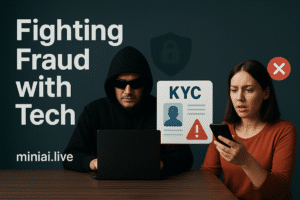Ever tried logging into an app and wondered if your face was really “you”? Weird thought, right? However, that small fright about the fact that somebody is trying to impersonate you is very tangible in 2025. Liveness detection is not a fancy tech term anymore, but the unknown savior of apps, banks, or even smart devices against all sorts of shady fraudsters.
Developers, if you’ve been staring at SDK options thinking, “Which one actually works without giving me a headache?” Yes, we’ve all been there. Let’s walk through the top 5 face liveness detection SDKs that are making waves this year, and how you can pick the one that actually fits your project. Spoiler: some of these might surprise you.
Face Liveness Detection: Why It’s Actually a Big Deal
So, what is it exactly? Face liveness detection checks if a face is alive or just a photo, video, or mask. Think of it as a subtle “Hey, are you really here?” test for your app.
It matters everywhere:
- Banking apps: stopping account takeovers before they happen.
- Healthcare portals: Getting delicate patient records in the right hands.
- Enterprise logins: ensuring only the right people can log in.
- E-commerce: preventing sneaky fraudulent purchases.
Without liveness detection, even the fanciest facial recognition can be fooled. And trust me, you don’t want your app to be that example everyone talks about.
How This Magic Actually Works
You might think, “AI just looks at a face, right?” Well, it’s a little more scientific. Modern SDKs peek into tiny signs of life that humans barely notice:
- Eye Blink Detection: the subtle involuntary blink that photos don’t have.
- Micro-expression Analysis: little twitchy expressions that say, “Yep, I’m alive.”
- 3D Depth Mapping: distinguishes between a flat picture and a face that is three-dimensional.
- Texture & Skin Analysis: looks at skin patterns, reflections and natural nuances.
Put them together, and boom, 99%+ accuracy, even if someone tries a mask, a low-light trick, or some sneaky video.
1. MiniAiLive Face Liveness SDK
MiniAiLive is like that Swiss army knife of liveness detection. Quick, reliable, and does a lot without fuss.
Why it stands out:
- Works on mobile, web, and desktop, yeah, really all three.
- Real-time anti-spoofing for photos, videos, and masks.
- Plays nice on iOS, Android, and cross-platform apps.
- Toss in ID document verification, and it’s basically a one-stop shop.
Why developers love it:
MiniAiLive doesn’t make you jump through hoops. Companies using it report up to 97% fraud reduction. That’s not marketing fluff, that’s real numbers.
Pro Tip: Fintech apps, pay attention. MiniAiLive helps you tick KYC boxes without making users hate you.
2. Face++ Liveness Detection SDK
Face++ has been around a while and keeps proving why. Their 2025 SDK is sharper than ever.
Highlights:
- Multiple anti-spoofing methods: texture, motion, depth, you name it.
- Real-time video verification.
- Cloud API for big-scale apps.
Why it’s useful:
Fintech and e-commerce love Face++ because it handles large user bases with minimal hiccups. And if you are the developer type who shudders at the sight of bloodless documentation, you will like their detailed documentation and their updates.
3. Microsoft Azure Face API with Liveness
If your project lives in the Microsoft ecosystem, Azure Face API is basically a dream.
Key perks:
- Smart integration with Azure Cognitive Services.
- Cloud-based is ready for large-scale operations.
- Multi-factor authentication is built in.
Why it rocks:
Azure not only works well, but also follows the rules. GDPR? ISO? Check and check. Developers get enterprise-level security without reinventing the wheel.
Developer Tip: If you’re already using Microsoft tools, hooking this up feels almost too easy.
4. Kairos Liveness Detection SDK
Kairos is kind of the “privacy-conscious” option, lightweight, efficient, and thoughtful about data.
Key points:
- Perfect for mobile apps.
- Detects spoofing with solid AI.
- Data privacy is front and center.
Why it works:
Startups and mobile-first developers love Kairos because it’s accurate even on low-bandwidth connections. Plus, pairing it with encrypted storage? Users will feel extra safe.
5. Cognitec FaceVACS SDK
Cognitec is the enterprise, government, and airport playground. Serious stuff.
Features:
- High accuracy even in tricky lighting.
- Multi-modal authentication (face + ID docs).
- Built for large-scale, enterprise, or government systems.
Why it’s special:
It’s not just about detecting live faces. Cognitec lets developers fine-tune algorithms for specialized projects. Got a weird edge case? You can handle it.
Picking the Right SDK
Here’s the cheat sheet:
- Accuracy: High-stakes apps need 99%+.
- Platform support: Mobile? Web? Desktop? Check compatibility.
- Ease of integration: Easy lives are made by good docs.
- Compliance: GDPR, ISO or local rules do not omit this.
- Scalability: on-premise or cloud, based on the load.
Tip: Conduct a small pilot first, then implement on a large scale. Saves headaches later.
SDK Setup Made Simple
- Begin with a small test.
- Optimize the user flow, don’t frustrate users.
- Use backup verification like OTP or email for tricky cases.
- Monitor error: Tracking the instances when the system admits or denies users.
- The SDK and AI models should be updated regularly.
Multi-Factor Authentication + Liveness
For those who like extra layers:
- Face + OTP: quick verification code.
- Face + Fingerprint: double the biometric fun.
- Face + Behavioral Biometrics: typing patterns, gestures, subtle stuff.
- Face + Document Verification: proves the user owns an ID too.
Tracking Performance
Key metrics to keep an eye on:
- FAR: How often a fake face sneaks in.
- FRR: How often does a real user get blocked?
- First-Time Pass Rate: Smooth onboarding for users.
- Processing Time: Nobody likes waiting.
- Scalability: Handles growth without crashing.
Future Trends
- AI is automatically modified to new tricks of spoofing.
- Next level accuracy with 3D + Infrared.
- Edge computing: quick, in-gadget validation.
- Unified SDKs for mobile, desktop, and IoT.
- Privacy-first solutions: minimal biometric storage, max compliance.
Investing in future-ready SDKs now is basically buying peace of mind later.
The Importance of Face Liveness Detection in Modern Apps
Enough with the farce; security is no longer a check box. Users expect seamless experiences without worrying about fraud. Developers are in the tricky position of balancing ease of access with robust security. That’s where face liveness detection steps in.
Here’s why it matters more than ever:
- Exploding Cyber Threats: The fraudsters are smarter, and they also use 3D masks and deepfakes to circumvent conventional security.
- User Trust: Apps that feel secure keep users happy and loyal.
- Regulatory Pressure: Liveness detection has become a measure of compliance in most sectors due to GDPR, CCPA and other privacy regulations.
- Convenience Factor: No passwords, no pins, just a glance at your app.
Think of it as giving your users a security bouncer at the front door, without slowing them down.
Key Features to Look for in Modern SDKs
SDKs are not made equal. The following are the things that developers should check before committing:
- Real-Time Processing: No one wants a login that takes 10 seconds.
- Multiple Anti-Spoofing Techniques: Eye blink detection, micro-expression analysis, 3D depth mapping, and texture analysis.
- Platform Compatibility: Mobile, desktop, web, IoT, you need coverage.
- Data Privacy Compliance: SDK must meet GDPR, ISO, and other relevant standards.
- Customizable Thresholds: Let developers fine-tune the system for their app’s unique risk tolerance.
Fun fact: The better the SDK integrates with your workflow, the fewer headaches down the line.
Integration Strategies for Developers
Getting an SDK isn’t enough. The magic is created in the process of integration. Here’s a practical approach:
- Step 1: Environment: First, run simulations using other devices and lighting conditions.
- Step 2: Rollout: It is recommended that it be rolled out with a few users to find out edge cases.
- Step 3: Monitor Analytics: Measure failed attempts, false positives and process times.
- Step 4: Multi-Layer Security: Pair-liveness OTP / Fingerprint / behavioral biometrics.
- Step 5: Ongoing Updates: Fraud is a fast-changing topic, so should your SDK models.
Quick tip: Keep your logs, but anonymize user data to stay privacy-friendly.
Common Mistakes Developers Make
Even experienced devs slip up sometimes. Avoid these pitfalls:
- Ignoring Device Variability: Camera quality varies; test on older devices too.
- Overlooking Lighting Conditions: Poor lighting can tank detection accuracy.
- Skipping User Education: The users are not versed with the process of holding the camera or where to position themselves; mere indications will help.
- Neglecting Backup Verification: Nevertheless, always offer a backup such as OTP or email.
- Not Tracking Metrics: Metrics like FAR and FRR are critical to know if the system works in real life.
Think of it as teaching your app how to “see” better.
Enhancing User Experience Alongside Security
The issue of security is crucial, and no one enjoys friction. Balance is key:
- Quick Onboarding: Liveness detection should take a second or two, no more.
- Friendly Prompts: “Tilt your head slightly” beats “Verification failed.”
- Progress Feedback: Indicate to the users when the system is scanning; it eliminates anxiety.
- Minimal Interruptions: Do not make it complicated with a few processes; unite the verification with the practice of entering into the system.
Users often forgive a slow app but not a confusing one.
Combining Liveness Detection with AI Insights
Next-generation SDKs do not simply see life, but can also provide helpful AI feedback:
- Behavioral Biometrics: Detect patterns in typing, swiping, or gestures.
- Fraud checks: SDKs can spot suspicious actions early.
- Adaptable Learning: AI can prevent novel artificial attempts.
- Cross-Platform Analytics: See how detection performs across devices, OS versions, and regions.
Bonus: Developers can use these insights to optimize app security continuously.
Practical Applications Across Industries
Face liveness detection isn’t limited to one field. Let’s break it down by use case:
1. Fintech & Banking
- Secure login and fund transfers.
- Fraud prevention for cardless ATMs.
- KYC verification during account creation.
2. Healthcare
- Patient identity verification for telemedicine.
- Prevent unauthorized access to sensitive medical records.
- Quick, frictionless check-ins for appointments.
3. Travel & Hospitality
- Fast-track airport boarding using facial recognition.
- Hotel check-ins without ID cards.
- Seamless loyalty program authentication.
4. Enterprise-Ready Features
- Secure access to company systems.
- Face check helps track time.
- Two-step login adds safety.
5. E-Commerce
- Prevent account takeover.
- Verify users for high-value transactions.
- Secure markets against spam accounts.
Each industry sees unique benefits, but the core idea is the same: secure, frictionless identity verification.
Metrics Every Developer Should Track
The most important metrics to keep your system in high quality are:
- False Acceptance Rate (FAR): What is the rate that fraudsters are sneaking in?
- False Rejection Rate (FRR): The frequency of being blocked by legitimate users.
- Speed of Processing: It should not be like waiting to see a piece of paint dry.
- First-Time Pass Rate: Users should rarely fail their first try.
- Scalability & Load Handling: Can your system handle growth without lag?
Tip: Monitor tendencies, not mere figures. Context matters.
Future-Proofing Your SDK Choice
2025 and beyond are moving fast. Here’s what to look for:
- Anti-Spoofing with AI: Auto-adaptive models.
- Edge Computing: Operates directly at the hardware to achieve privacy and speed.
- 3D + Infrared Integration: Improves the depth and heat maps to improve detect.
- Unified Cross-Platform SDKs: One SDK for mobile, desktop, and IoT.
- Privacy-Centric Solutions: Minimal storage, maximum compliance.
Investing in an SDK that evolves reduces headaches (and breaches) later.
Tips for Optimizing Cost and Efficiency
- Cloud or On-Prem: Cloud can be scaled easily; on-prem offers a higher degree of control.
- Watch API Use: Too many calls can increase costs.
- Light SDKs: Larger SDKs are faster on the phone and make apps lighter.
- Update in Batches: Periodically update AI models rather than continuously.
- Hybrid Setup: Complete heavy duties in the cloud and do the quick checks on the device.
Smarter setup = happier users and lower costs.
Conclusion
Face liveness detection is not an option, but the unsung hero of the security of your app. The other options are all good and include MiniAiLive, Face++, Azure, Kairos, and Cognitec, but MiniAiLive is the best in terms of ease, speed, and multiple platforms.
Want your users to feel safe while logging in? Want fraudsters left scratching their heads? Give MiniAiLive a shot. You will be rewarded with your app, your users.
Which SDK are you leaning toward for your next project?
FAQs
1. What is visage liveness detection, and why is it significant?
Face liveness recognition checks to make sure the person is real and not a picture or video. It stops fake attacks, makes security better and keeps private information safe.
2. Are these SDKs compatible with mobile applications?
Yes. Most of the best SDKs, like MiniAiLive, Kairos, and Face++, work best on iOS and Android and can identify faces in real time without slowing down the app.
3. How accurate are face liveness check SDKs?
The best SDKs can identify over 99% of objects, even when there isn’t much light or when masks are used.
4. Is an internet connection required to utilize these SDKs?
Some SDKs, like Azure Face API, are in the cloud and need to be connected to the internet. Other apps, like MiniAiLive or Kairos, can work on-device to verify when you’re not online.
5. Are these SDKs in compliance with privacy regulations?
Yes. Trustworthy SDKs follow GDPR, ISO standards and local privacy rules, which keep user data safe.


